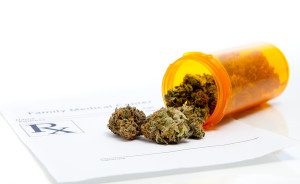

How has new legislation affected marijuana use in the United States? The best available data suggest that marijuana use is increasing in adults but not teens, with a decrease in marijuana-related arrests but an increase in treatment admissions, according to an update in the January/February Journal of Addiction Medicine, the official journal of the American Society of Addiction Medicine (ASAM).
 The review by Jane C. Maxwell, PhD, of The University of Texas at Austin and Bruce Mendelson, MPA, of the Denver Office of Drug Strategy gives insights into the initial impact of legalizing or decriminalizing marijuana in some states. “Data are needed to understand the relationship between the patterns and amounts of use in terms of consequences as well as data on the health conditions of those receiving medical marijuana and the impact of higher potency,” the authors write.
The review by Jane C. Maxwell, PhD, of The University of Texas at Austin and Bruce Mendelson, MPA, of the Denver Office of Drug Strategy gives insights into the initial impact of legalizing or decriminalizing marijuana in some states. “Data are needed to understand the relationship between the patterns and amounts of use in terms of consequences as well as data on the health conditions of those receiving medical marijuana and the impact of higher potency,” the authors write.
Maxwell and Mendelson provide an update on recent state laws regarding marijuana and analyze available data on how those laws are affecting rates of marijuana use, attitudes toward marijuana, and other key issues. A few states have legalized possession/use of small amounts of marijuana, while several others have “decriminalized” marijuana. Most states now permit some types of “medical marijuana” use.
Data from the National Survey on Drug Use and Health suggest that, over the past decade, marijuana use has increased significantly among adults aged 18 to 25 and those aged 26 years and older. These trends appear to have begun before 2012, when Colorado and Washington became the first states to legalize marijuana.
Meanwhile, marijuana use by youth aged 12 to 17 has not increased significantly. However, young people’s perceptions of the risks of using marijuana have decreased, suggesting that they may be more likely to start using marijuana in the future.
Studies have consistently shown that the potency of marijuana is increasing. Data from California suggest that marijuana is more widely available, and that more drivers are testing positive for it.
Initial reports from Colorado and Washington State provide evidence on the effects of legalization. In Denver, marijuana-related hospital admissions, emergency department visits, and calls to poison control centers have all increased. At the same time, arrests for marijuana use/possession and admissions to substance use disorder treatment programs have decreased.
Data from the Seattle area also show reduced rates of treatment admissions and police involvement, along with an increased prevalence of frequent marijuana use.
The lack of data on the characteristics of the users of medical marijuana,
their medical conditions, and use patterns, as well as adverse events they may suffer by using different variations of the drug is an important knowledge gap. Data are needed to understand the relationship between the patterns and amounts of use in terms of consequences, as well as on the health conditions of those receiving medical marijuana and the impact of higher potency.
The authors hope their review will provide a useful starting point for evaluating the impact of changes in marijuana legislation. They write, “As more states enact laws allowing the medicinal use of marijuana and relax penalties for the personal use of marijuana, attention should be paid to the experiences of the states to date and changes in their laws to handle unanticipated problems.”
Source: Wolters Kluwer Health: Lippincott Williams and Wilkins